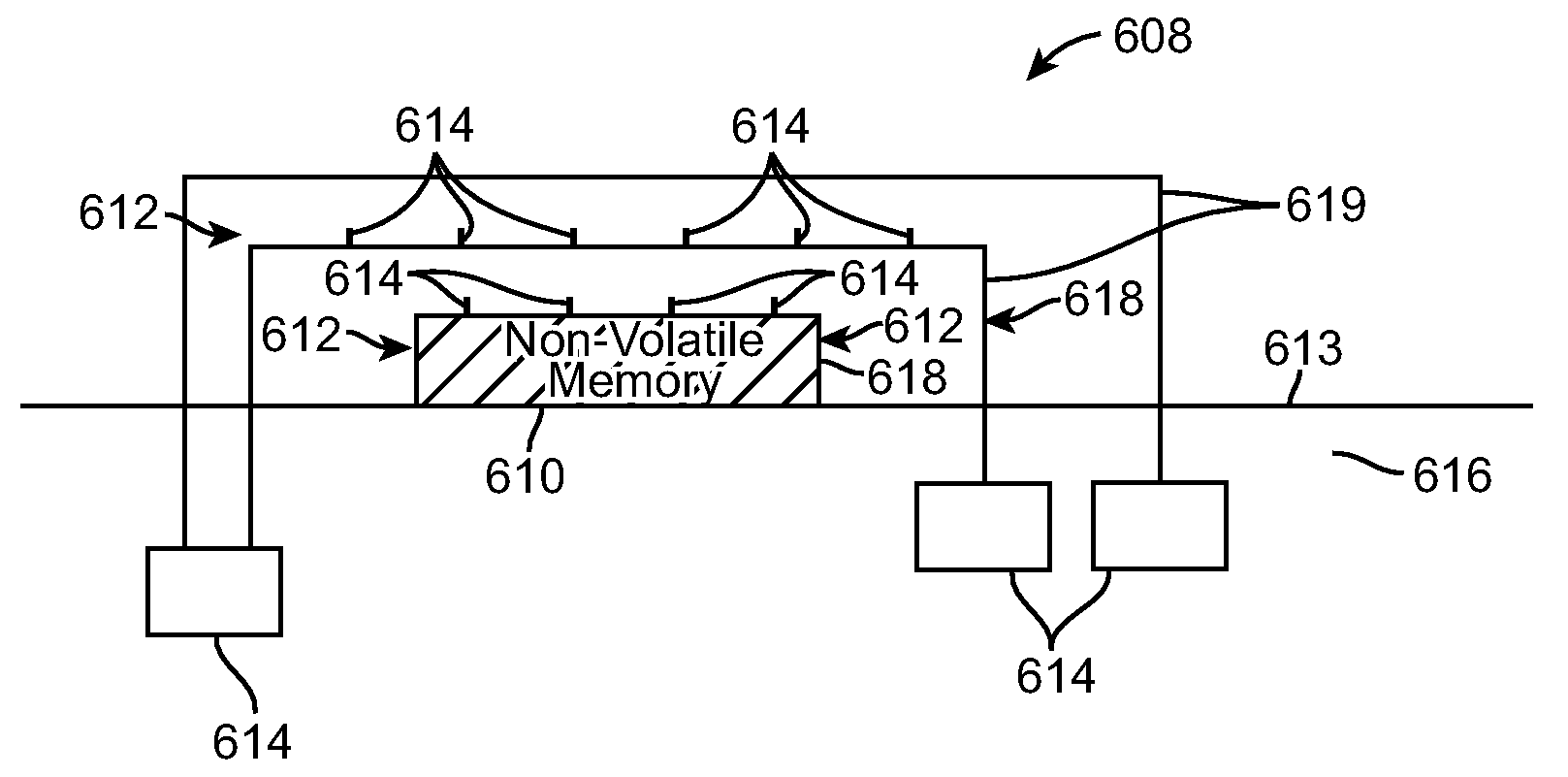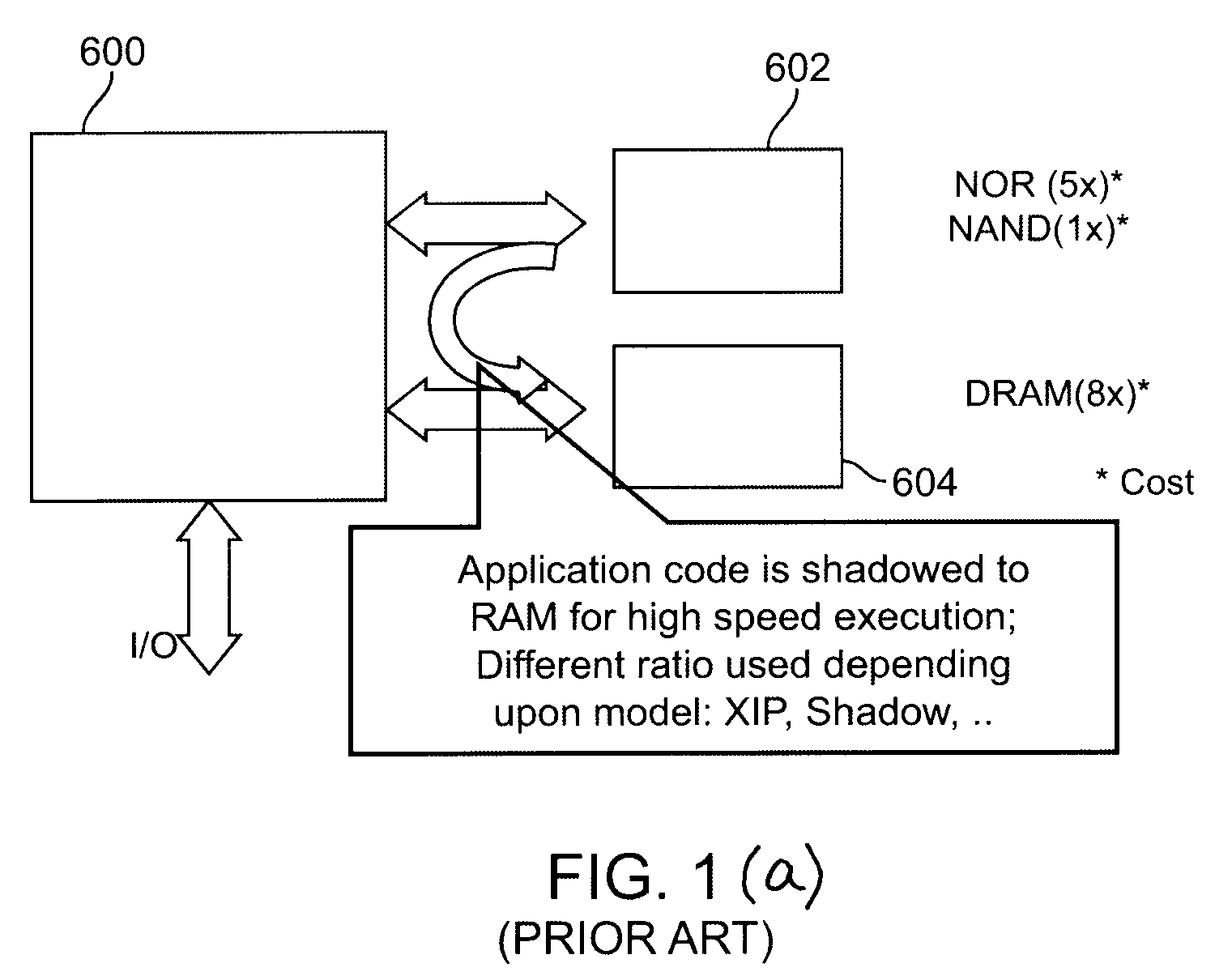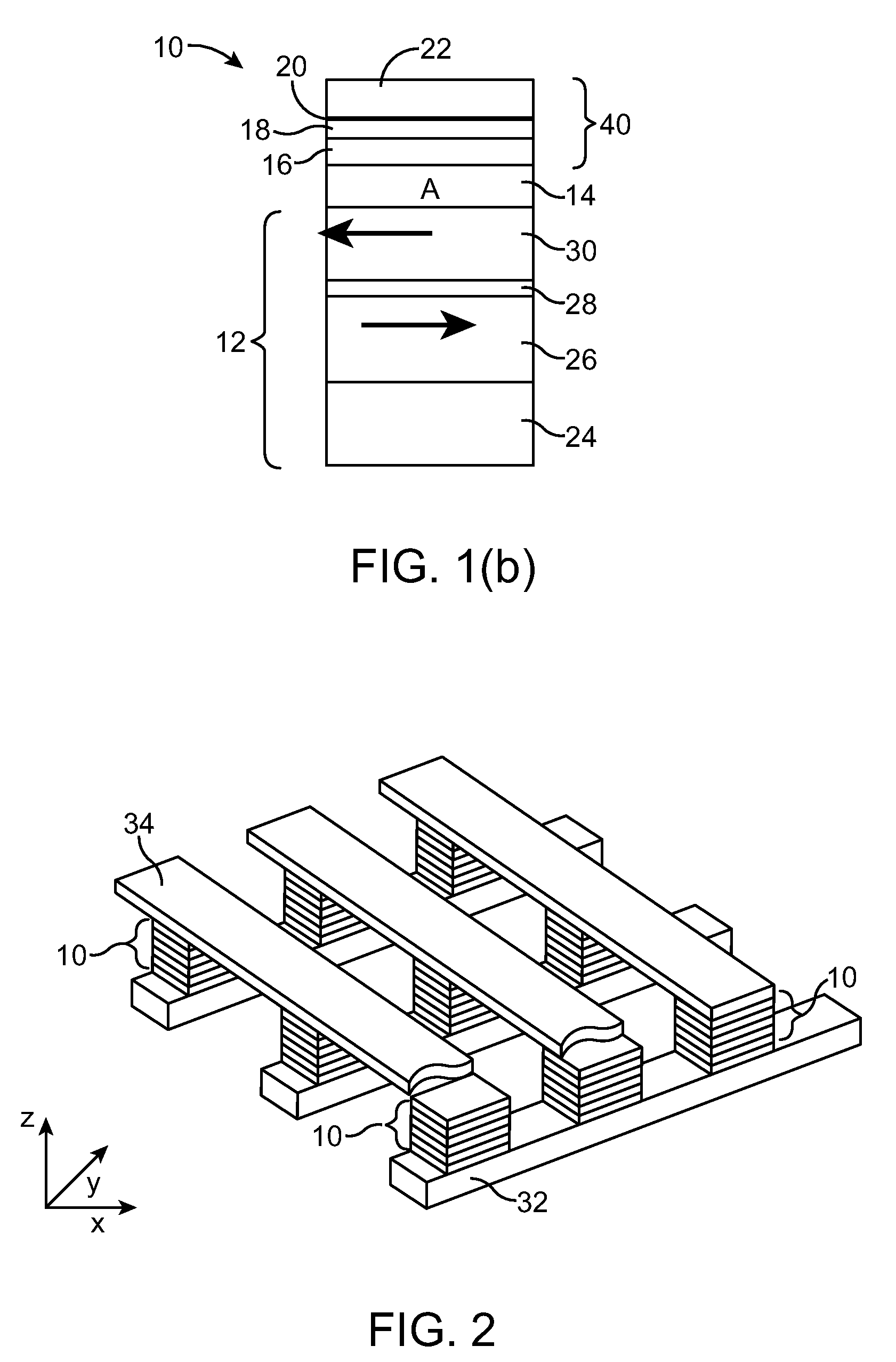Though widely used and commonly accepted, such media suffer from a variety of deficiencies, such as access latency,
higher power dissipation, large physical size and inability to withstand any physical shock.
SSNVM devices have memory structures made of NOR / NAND-based
flash memory, providing fast
access time, increased input / output (IO) speed, decreased power dissipation and physical size and increased reliability but at a higher cost which tends to be generally multiple times higher than hard disk drives (HDDs).
Although NAND-based
flash memory is more costly than HDD's, it has replaced magnetic hard drives in many applications such as digital cameras, MP3-players,
cell phones, and
hand held multimedia devices due, at least in part, to its characteristic of being able to retain data even when power is disconnected.
However, as memory dimension requirements are dictating decreased sizes,
scalability is becoming an issue because the designs of NAND-based
Flash memory and
DRAM memory are becoming difficult to scale with smaller dimensions.
For example, NAND-based
flash memory has issues related to
capacitive coupling, few electrons / bit, poor error-rate performance and reduced reliability due to decreased read-write endurance.
It is believed that NAND flash would be extremely difficult to scale below 45 nanometers (nm).
Likewise,
DRAM has issues related to scaling of the trench capacitors leading to very complex designs which are becoming increasingly difficult to manufacture, leading to higher cost.
Design of different memory technology in a product adds to design complexity,
time to market and increased costs.
For example, in hand-held multi-media applications incorporating various memory technologies, such as NAND Flash, DRAM and
EEPROM / NOR flash memory, complexity of design is increased as are manufacturing costs and
time to market.
Another
disadvantage is the increase in size of a device that incorporates all of these types of memories therein.
One of the problems with prior art memory structures including MRAMs is their
cell or memory size being too large therefore not lending itself well to
scalability.
This makes the
cell size too large leading to issues of
scalability and cost.
This is primarily due to a dramatic drop in the price of the flash memory.
NOR flash memories are primarily used for applications where non-volatility is essential, but the size of the memory is small and the memory is seldom read or written.
This is mostly used in NAND flash to enhance the memory density, but normally adversely affects the speed of the memory.
Another form of dominant memory is the dynamic RAM (DRAM), which is volatile and costly but has faster random read / write time than non-
volatile memory in the form of flash.
Static RAM is the most expensive memory used.
In the current marketplace, NOR tends to be approximately five times more costly than MLC NAND, due primarily to its
cell size.
DRAM has a
cell size of 8F2 but is harder to manufacture due to its various trench-
capacitor design requirements.
Additionally, as the process geometry decreases, the design of NAND and
DRAM memory become more difficult to scale.
For example, NAND has various issues related to
capacitive coupling, fewer electronsibit, poor error-rate performance and worse reliability due to its poor read-write endurance.
It is believed that NAND, especially MLC NAND would be extremely difficult to scale below 45 nano meters (nm).
Likewise, DRAM has issues related to scaling of its trench capacitors leading to very complex designs which are becoming very difficult to manufacture, thereby leading to increased manufacturing costs.
This is a dominant part of the overall cost for mobile multi-media products.
That is, ROM and RAM are manufactured on multiple chips, and perhaps a monolithic die, resulting in larger real estate being consumed by use of such memory, and therefore increased costs.
This capacity usage on a
printed circuit board (PCB) that additionally has other chips (or
semiconductor), such as a controller, make such designs approximately 5 to 10 times more expensive than the NAND memory.
 Login to View More
Login to View More  Login to View More
Login to View More 


